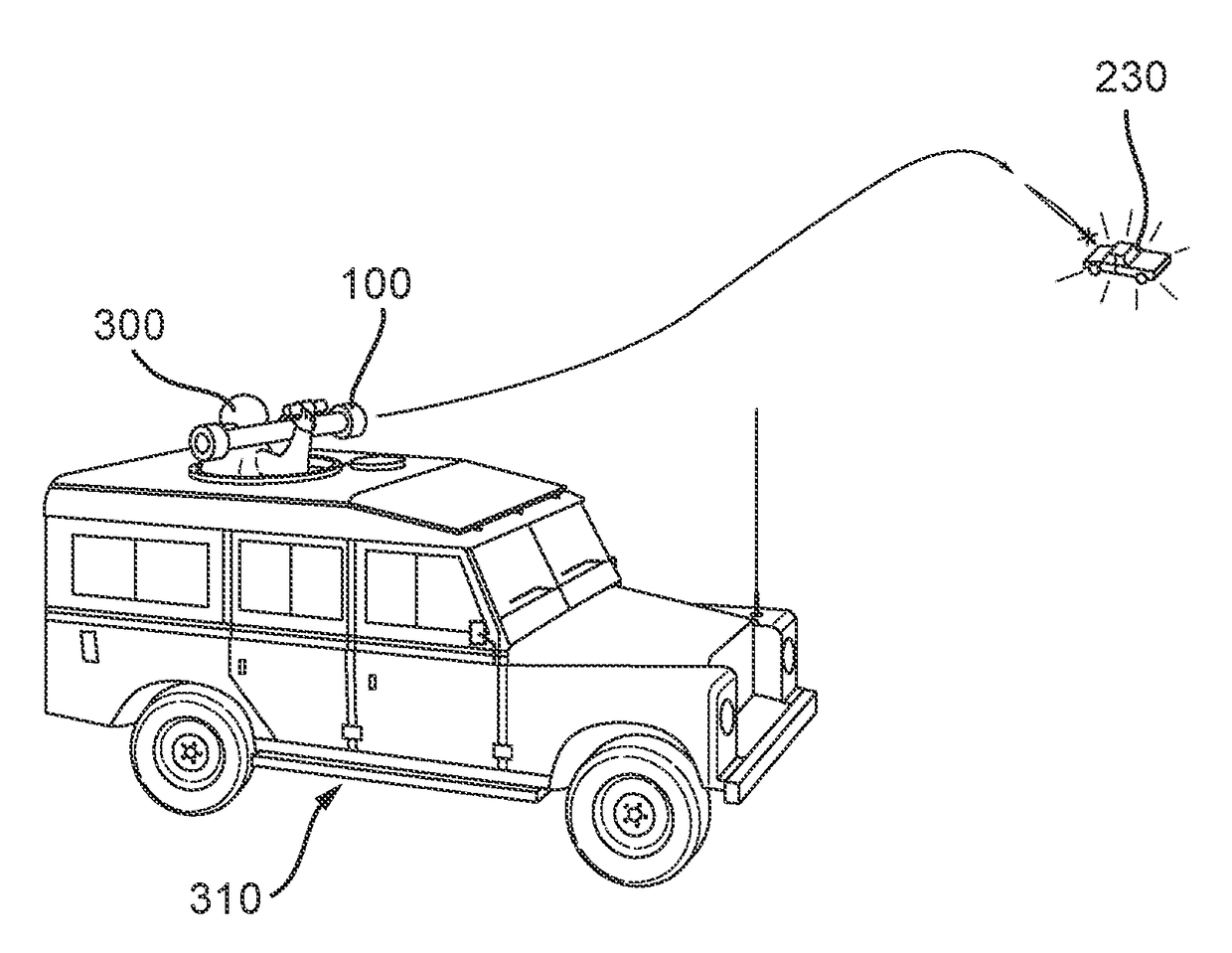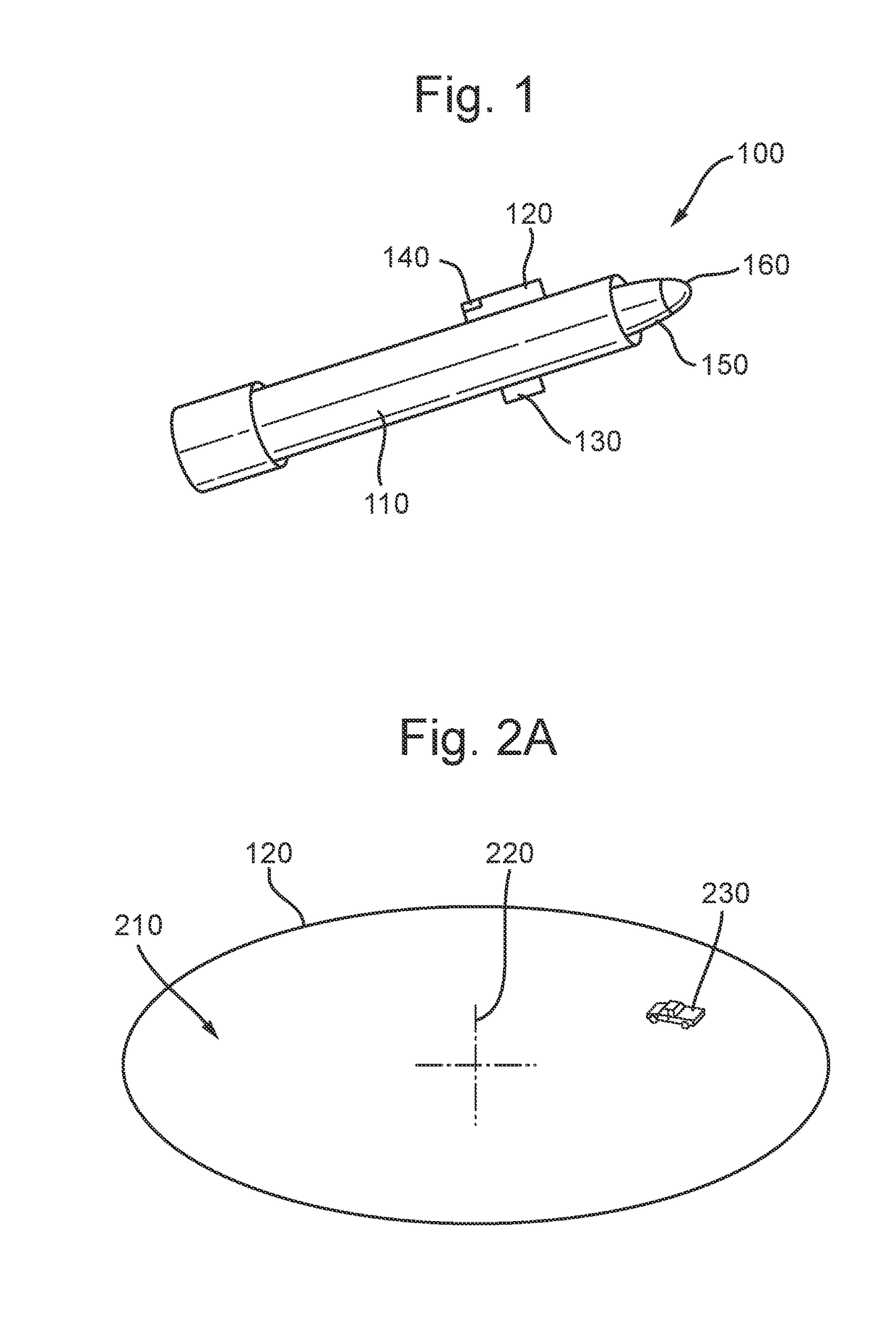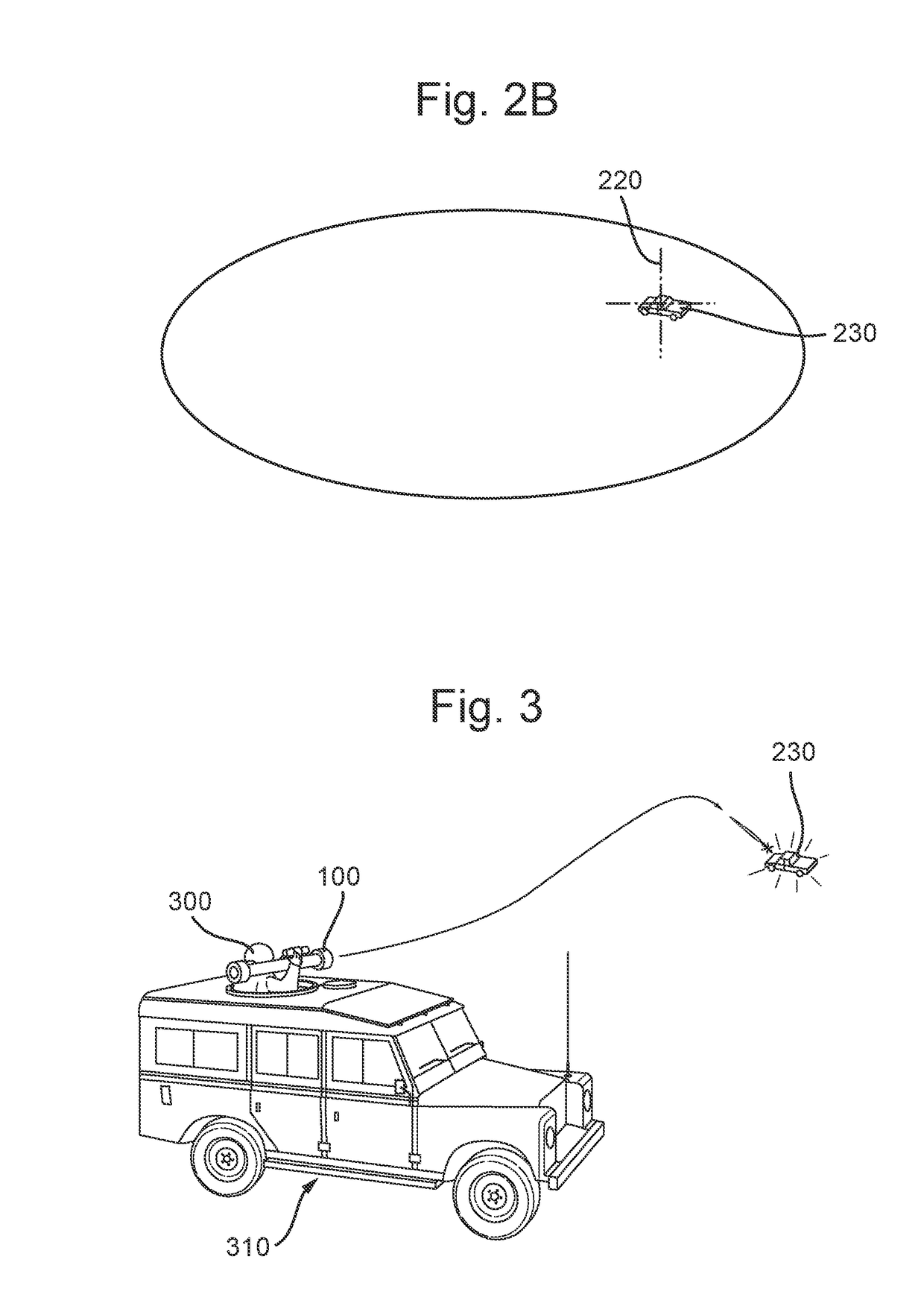Target designator
a target designator and target technology, applied in the field of hand-held target designators, can solve the problems of difficult hand control, inability to finely control long-range targets, and impose significant errors on long-range targets, so as to reduce the overall load, improve the degree of flexibility, and improve the effect of simplicity
- Summary
- Abstract
- Description
- Claims
- Application Information
AI Technical Summary
Benefits of technology
Problems solved by technology
Method used
Image
Examples
Embodiment Construction
[0022]Target designators according to embodiments of the present invention are expected to find application in a variety of situations where presently known systems are either difficult or impracticable to operate. One exemplary embodiment of a target designator will now be described, in which the target designator is incorporated into a handheld launcher for a guided weapon.
[0023]Handheld launcher 100 is illustrated in FIG. 1, and comprises launch tube 110, sight 120, and trigger 130. The launcher 100 is shown with weapon 150 mounted in tube 110 ready for launch. Launch of the weapon 150 is commenced on activation of the trigger 130 which, in the present embodiment, is a two-pull trigger. Weapon 150 is a guided weapon, and comprises a sensor cluster 160 mounted in the nose region of the weapon, as well as an on-board processor able to perform guidance algorithms such that on launch, the weapon is guided towards a target designated to it by an operator, such as target 230 (as shown ...
PUM
 Login to View More
Login to View More Abstract
Description
Claims
Application Information
 Login to View More
Login to View More - R&D
- Intellectual Property
- Life Sciences
- Materials
- Tech Scout
- Unparalleled Data Quality
- Higher Quality Content
- 60% Fewer Hallucinations
Browse by: Latest US Patents, China's latest patents, Technical Efficacy Thesaurus, Application Domain, Technology Topic, Popular Technical Reports.
© 2025 PatSnap. All rights reserved.Legal|Privacy policy|Modern Slavery Act Transparency Statement|Sitemap|About US| Contact US: help@patsnap.com



